For some, sitting down to fill an empty page is easy as pie. For others, it’s downright impossible.
The fact is, regardless of how naturally writing comes to you, there’s more to knowing how to write an article than typing a few paragraphs into a document. If you want to consistently create good, well-researched, and engaging content that performs well in search engines, you’ll more than likely need a bit of help.
That’s where we come in.
We’ve compiled our top five tips for good SEO article writing, as well as our top recommended tools that can help you research and learn how to write an article.
1. Use a Research Tool to Find Great Topics
The first step to learning how to write an article is deciding on a good topic. If your head is spinning trying to figure out what people want to read about in your niche, we’ve got a tool that can help. The Semrush Topic Research Tool is perfectly designed to help you brainstorm and organize your content ideas.
The Topic Research Tool outlines topics that resonate with your usual audience and identifies the most popular existing pieces from different websites and their trends on Google.
All you have to do is log into Semrush, open the Topic Research tool, and input a keyword to check out the results. The tool will then provide you with potential subtopics. You can organize the results by:
Volume — the most-searched-for results Difficulty — the number of people already trying to rank for a term, and (as a consequence) how difficult it will be for you to rank given the competition Topic Efficiency — results based on the two above factors combined Trends — the most popular topics over the last 60 days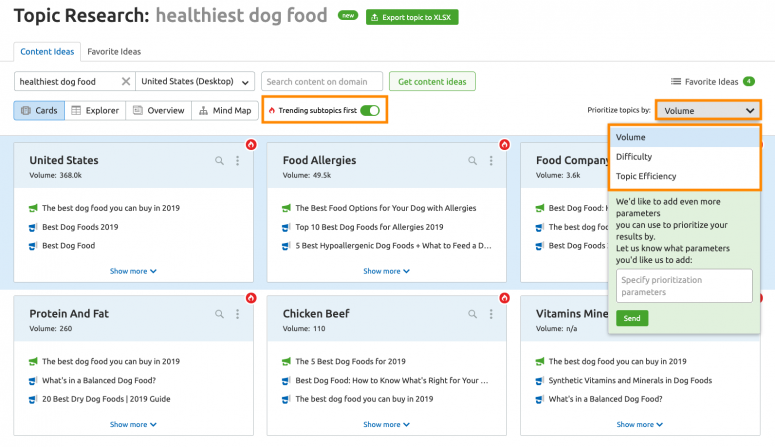
When you click on a subtopic, you get even more information on what you may need to write an article:
Resonant Headlines — the ten most prominent titles (as decided by a page’s number of backlinks) Questions People Ask — these topic suggestions relate to common questions people ask around your keyword. It’s a good idea to utilize these, as content that answers specific questions has a higher chance of getting into a Featured Snippet Related Search Queries — this gives you a look at the broader picture around your keyword by showing you the thought patterns of users. This may give you additional tips for your article writingIf you want to know more about this tool, you can read our blog post on generating content ideas with Topic Research.
Now you know what users are reading about in your niche and how you can fill a gap in the market. Collect your potential topics and start narrowing them down into a plan for your article.
2. Use Keyword Magic Tool to Determine Your Target Keywords
Once you’ve got your topic, the next step is to find your keywords to optimize your article to rank well on the SERPs. To find the right keywords for your content, you’re going to need some help from a tool.
The Semrush Keyword Magic Tool is perfect for discovering valuable keywords and will help you in your quest to write an article.
In the example below, the search turned up 146,964 related keywords that you could use to write an SEO-friendly article about cat food.
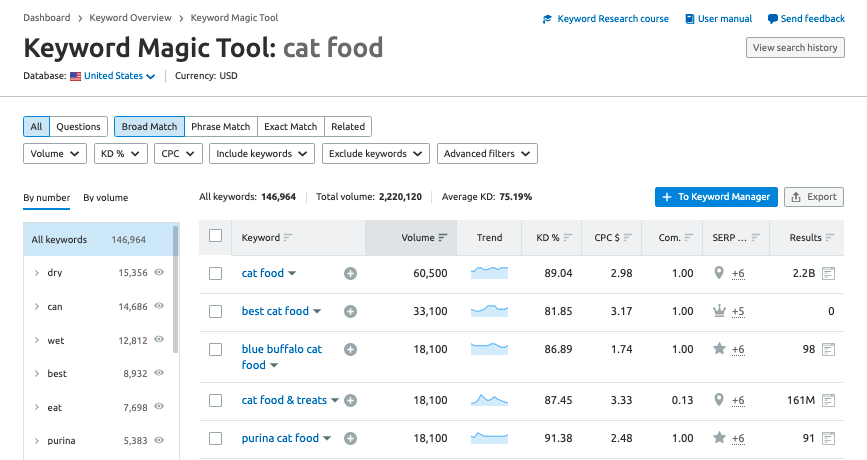
But there’s no need to get overwhelmed by how many options you have. It’s easy to search and filter the keywords, checking their relevance by word count, volume, keyword difficulty percentage, cost per click, competitive density, features, and results in SERPs:

Match Modifiers allows you to narrow your search even further:

And through the Questions filter, you will even find the best question-based keywords (which, as we said before, can be a way to the top of the SERPs due to their ability to trigger Featured Snippets):

Semrush does the hard work. All you have to do is choose and compile your keywords — and then you’ll know which terms to include in your text to ensure that it shows higher up in the search results.
Two bonus tips for using the tool:
Words with high CPC relate to high buyer intent — snatching higher rankings for these has a high ROI, but sometimes the highest rankings positions are very competitive. CPC means Cost Per Click, hinting that many paid search creators already spend a lot of money on these keywords. These SERPs are most likely full of more paid ads than organic results. Don’t be afraid of long-tail keywords with lower search volume. Targeting long-tail keywords will be far easier for you to rank on page one of the SERPs when people search for them because there’s less competition.Check out our blog post on how to do keyword research with the Semrush Keyword Magic tool to find out more.
Just like that, you’re another step closer to publishing a high-performing article.
3. Research, Research, Research
How to write an article that people will trust and want to read? Some good, old-fashioned research. To perform well, an article is optimized for search engines but written for users. It must be informative, factual, and cater to the user’s search intent.
So, once you’ve figured out the topics and the keywords that will boost your article in the search rankings, it’s time to get your facts straight.
To avoid falling into a Wikipedia wormhole, focus your research around the keywords you’ve already acquired through Semrush Tools. Then use the ‘people also ask’ and ‘related searches’ features to pin down the information that people want to know about your topic.

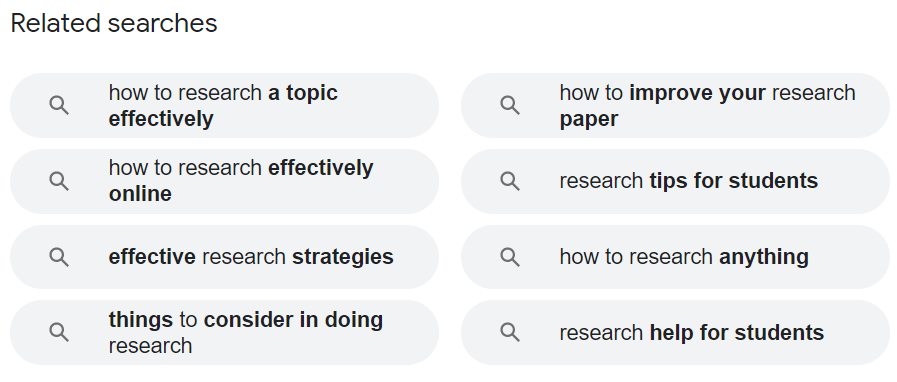
Set yourself a time limit, so you don’t spend too long researching and end up running out of time to write. Then get into as many relevant and reputable articles on your topic as you can.
If you already know a site that you trust in your field or niche and want to read their highest-ranking work, a good tip is to google “site:” before the site’s URL and add the keyword you’re looking for on that website.
For example, if we wanted to know what has already been written about the keyword ‘article’ on the Semrush blog, this is what we could do:
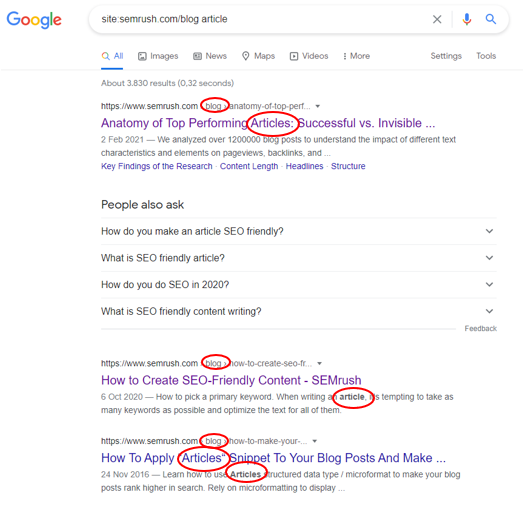
As you can see, each result is from the blog section of the Semrush website, and each one focuses on the keyword ‘article.’
We think this is a great tip because whether you’re browsing Google or walking the shelves of your local library, reading well-reviewed content on your topic is a great way to make sure yours matches up.
There are probably plenty of writers out there who have already done the heavy lifting for you. Use their sources in your research. Just always keep track of your sources. You never know when you’ll need to check back on them later.
Another plus of good research is that once you know the information that other people are covering in your space, you can be surer that the content you’re producing is in line with what users expect to see. Moreover, good research also uncovers possibly unaddressed issues in older articles. Be sure to fill in these precious gaps with your new and unique content to make your article stand out.
Now you’ve got more of the information you need to write a great article.
4. How to Write an Optimized Article? Use SWA
Maybe you’ve already done the above steps, and you’re knee-deep in your first draft. Now it’s time to dig into the details. Before you publish, you need to find out how well your draft is written and edit it.
Of course, you could proofread it yourself, spend a few hours pouring over the text, and carefully comparing it to that of your competitors. Then you could spend another hour or so making your changes, proofreading once more, and asking a friend to take a look at it.
Or you could let the Semrush SEO Writing Assistant (SWA) take care of it. With this tool, all you have to do is implement a few great suggestions.
The process is easy. Put your draft into the text box and immediately get feedback on how well it’s written.
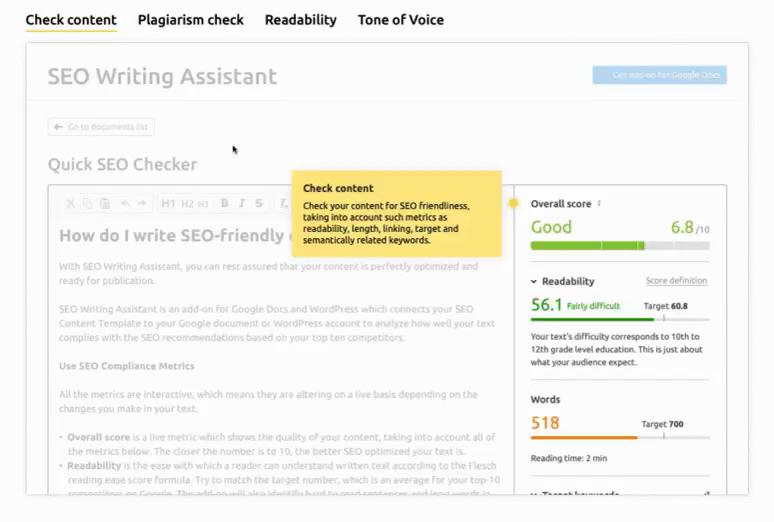
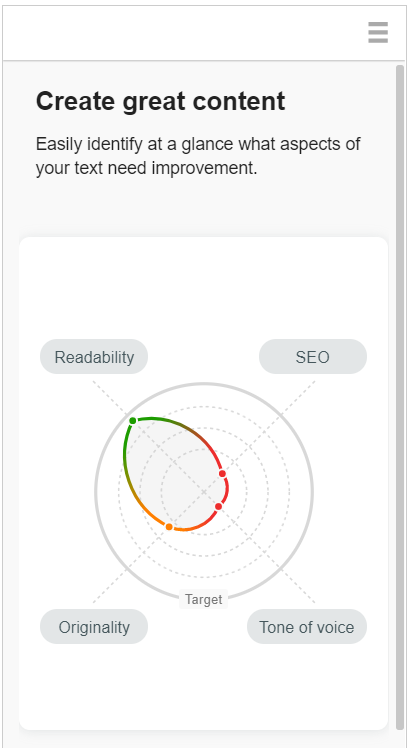
The best thing about SWA is the number of different attributes it checks for. Some include:
Readability and word count — Find out how complicated your content is compared to the average score of your top 10 Google competitors. Check that your text length matches the average for your topic.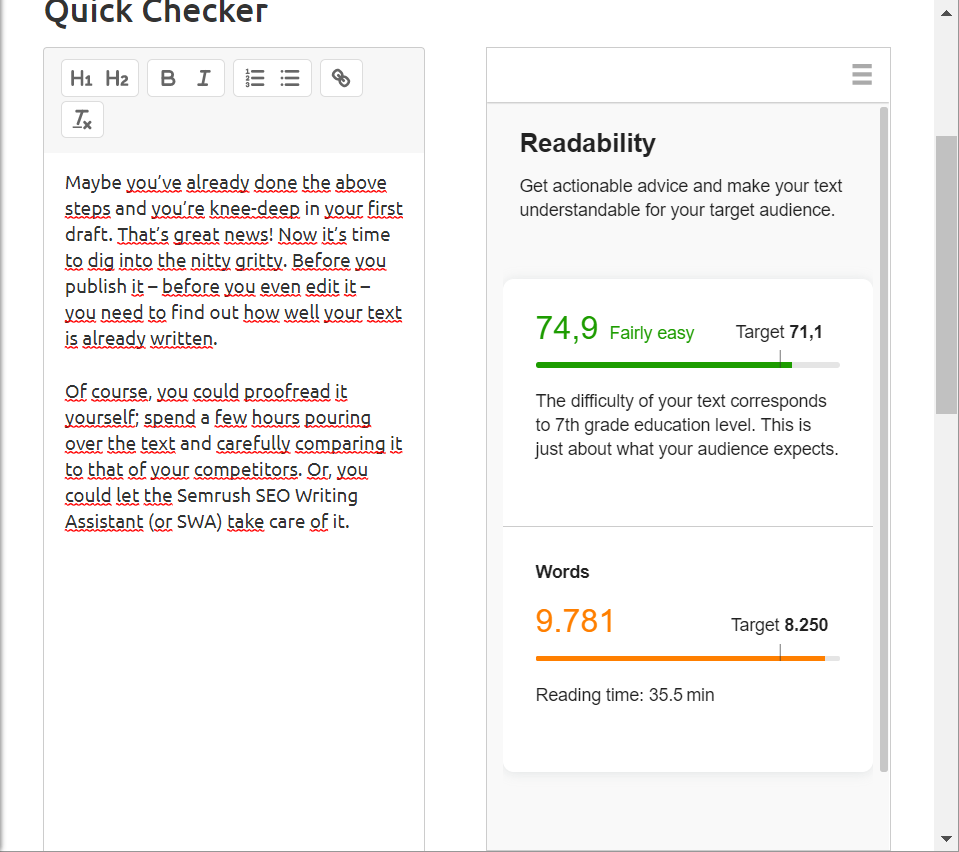 SEO — Get recommendations of target keywords that could add value to your text and improve your SEO performance.
SEO — Get recommendations of target keywords that could add value to your text and improve your SEO performance.  Title — Check that you’ve used your target keyword in the title and that your title is the right length.
Title — Check that you’ve used your target keyword in the title and that your title is the right length. Tone of voice — Find out if your tone is in line with other texts written on the same topic and based on your chosen keyword. Easily identify your most casual sentence for reference.
Tone of voice — Find out if your tone is in line with other texts written on the same topic and based on your chosen keyword. Easily identify your most casual sentence for reference.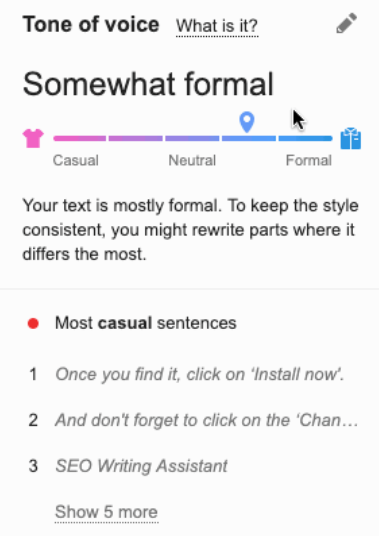 Linking — Learn the optimal number of links for your text, reveal broken links, and identify links without anchor text.
Linking — Learn the optimal number of links for your text, reveal broken links, and identify links without anchor text.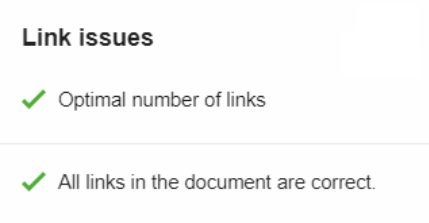 Originality — Detect any possible plagiarism in your text.
Originality — Detect any possible plagiarism in your text.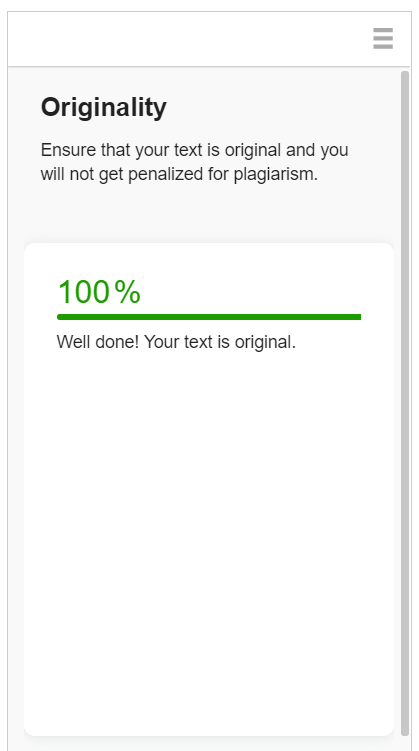
As you can see, another benefit of SWA is that it allows you to compare your article to your published competition. In using SWA, you ensure that you perform at least as well as your competition.
Implementing suggestions from SWA brings your content to an even higher standard. This makes writing and editing a great article a walk in the park.
5. Optimize Your H1s, Meta Content, and URLs
Our final tip for how to write a great article is checking how and where you’ve used your keywords to make sure your article is as optimized for search engines as possible.
Let’s look at where to use keywords in your text, your meta tags, and your URL.
Optimizing Your Article Content
You should include your keywords in your H1 heading tag and your H2 heading tags for a well-optimized article. This will help your SEO because checking and crawling H1s and H2s is still a central part of Google’s search ranking algorithm.
It is also important to be aware of where you use keywords within the body of your text. Whatever you do, you’ve got to avoid keyword cannibalization and keyword stuffing — if you don’t, you may be harming your SEO.
Keyword Cannibalization and Stuffing
Keyword cannibalization occurs when you have lots of different articles on one site ranking for the same keywords in Google. You don’t want to compete with yourself, so you must recognize where and when you’re cannibalizing your keywords.
To avoid cannibalization, make a note of what you’re already ranking for and make adjustments to your content accordingly. For the article you’re currently writing, make sure that you’re not prioritizing keywords that you’re already ranking for, and you’ll be good to go.
Keyword stuffing can also be dangerous for the performance of an article. Signs that you’re stuffing an article with keywords are:
Repeating your keywords unnecessarily. Using keywords where you wouldn’t put them naturally. Using words that aren’t relevant to your article because you know that they rank high in the search engine results.To avoid keyword stuffing, make sure that you don’t overuse keywords as-is, adjust and adapt them within your sentences for grammar and language variety.
Luckily, the Semrush SEO Writing Assistant checks your text for keyword stuffing and highlights any word that is used too frequently.
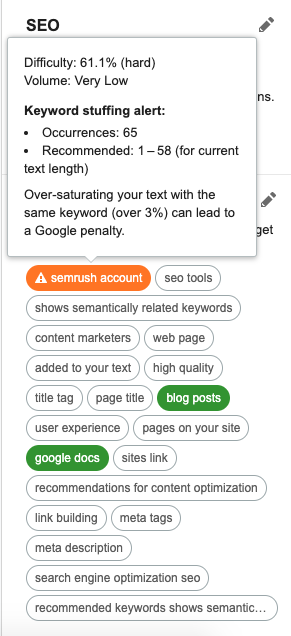
It’s a great place to double-check that you’re writing well.
Optimizing Your Meta Content and URL
If you want to publish a high-performing article, you should also optimize your meta content (title and description) and URL. This means doing everything possible to make your content look appealing and clickable on the SERP. Some top tips for meta titles and descriptions include:
Having a unique title and description for each article Avoiding long titles and descriptions (a title should generally be under 60 characters; a description should be between 140 and 160 characters) Matching the search intent Including a target keyword Using active language and a call to action in the descriptionSome tips for a good URL include:
Using your keyword Keeping it simple and easy to read Including 3-5 wordsBecause optimizing these parts of your article is so important, we’ve written plenty of other content on the subject. So, to find out more about what meta tags are and the best SEO practices for URLs, you can always check out our blog.
In the meantime, use the Title Issues section of the SWA Tool to check that your title is the right length for the Google character limits and whether you should do anything differently to attract users.
If you implement these final checks before publishing your article, you’ll be in a better position to perform well in search engines and attract more readers.
Need More Assistance? Use Semrush Marketplace Article Writing Service
It’s clear that learning how to write an article (or, simply writing, if you're an experienced writer) can take up a lot of time and effort. Although following our top tips will make it easier and your hard work will pay off, if you’re short on time then there is another option: consulting a professional to help you write an article.
If you’d rather outsource your writing to experts, then the Semrush Marketplace is the place to start. You can order the content you need with the click of a button. With Semrush, it’s easy to enlist reliable writers and join the 6,000,000 users who take advantage of the Marketplace services. The content you receive as a result is always uniquely tailored to your specifications and can even be readily SEO optimized.
Whether you need an article, an email newsletter, or a press release — the Semrush Marketplace can help. Even better, if you’re after a service that you can’t find in our marketplace, you can let us know and help us improve our services:
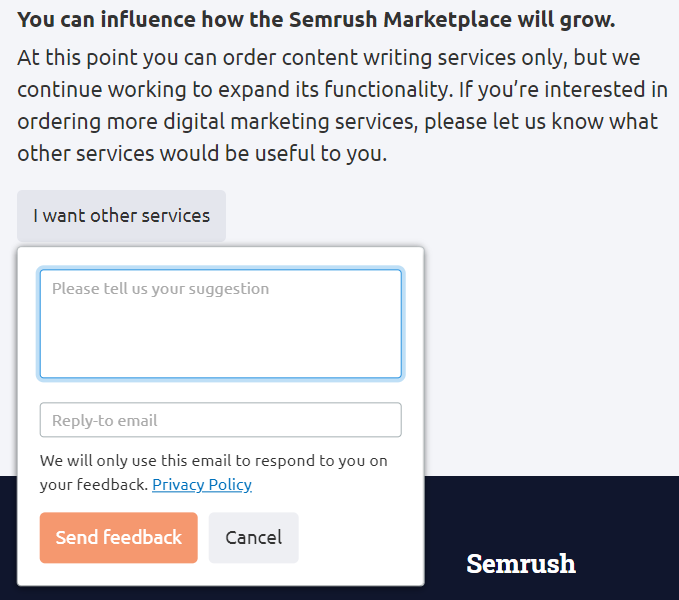
Got questions? You can check out our Semrush Marketplace FAQs here.
Now You Know How to Write an Article: Go Get Started
Now you don't need to sit and wonder how to write an article that wows readers (and search engines.) Whatever your topic, and whether or not you choose to write it yourself, you’re all set to create an interesting and informative article that will work for users and search engines.
Innovative SEO services
SEO is a patience game; no secret there. We`ll work with you to develop a Search strategy focused on producing increased traffic rankings in as early as 3-months.
A proven Allinclusive. SEO services for measuring, executing, and optimizing for Search Engine success. We say what we do and do what we say.
Our company as Semrush Agency Partner has designed a search engine optimization service that is both ethical and result-driven. We use the latest tools, strategies, and trends to help you move up in the search engines for the right keywords to get noticed by the right audience.
Today, you can schedule a Discovery call with us about your company needs.
Source:





